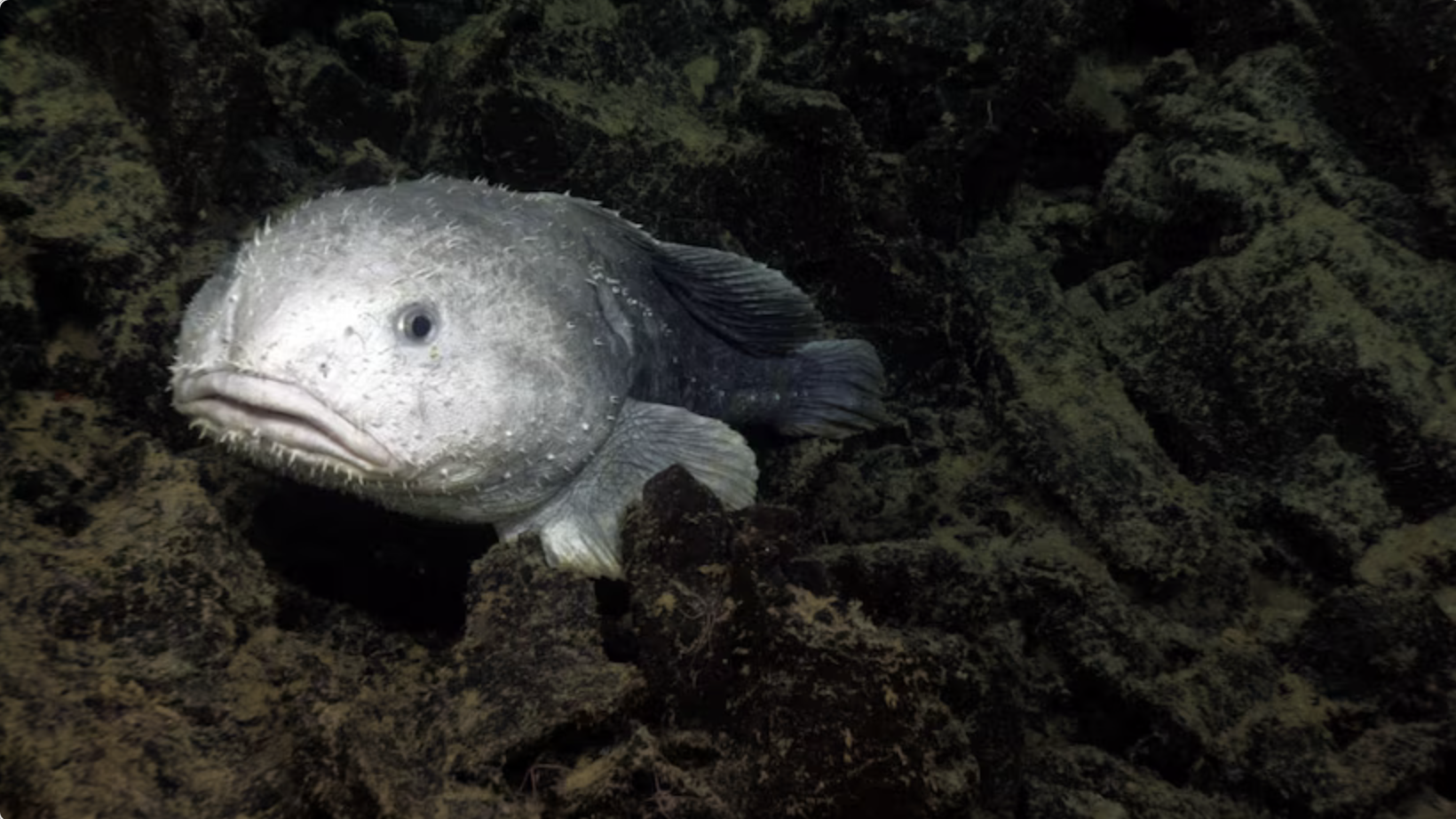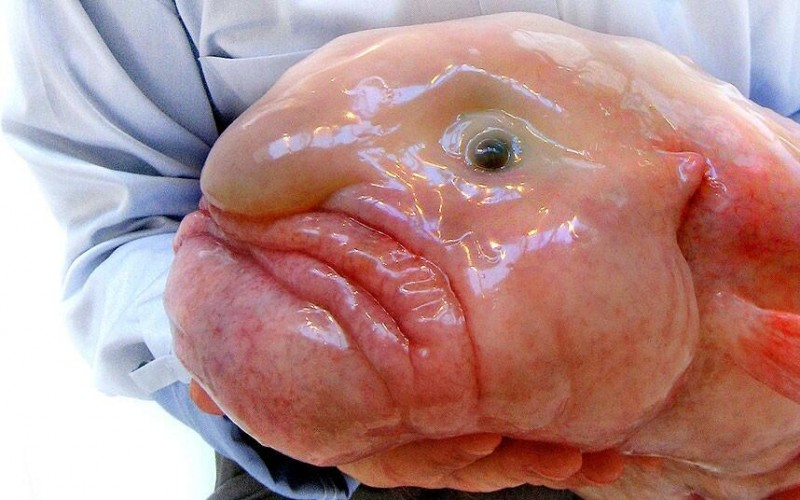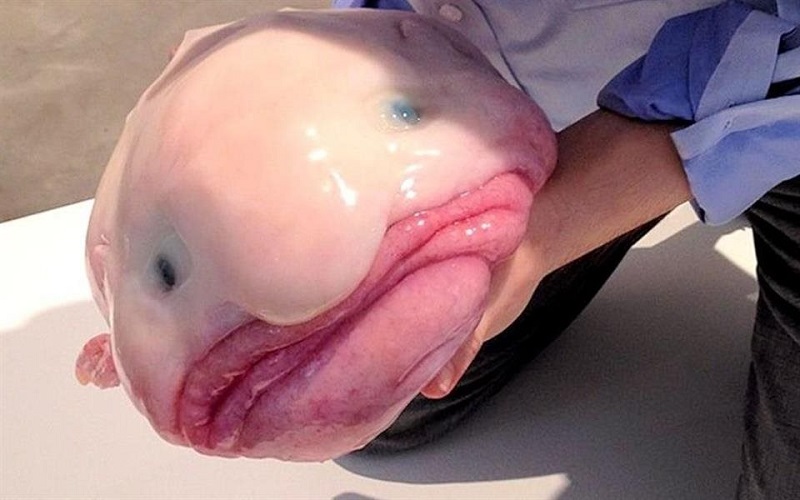Do you see a picture of the fish above? It’s not exactly what you think. This fish, known as the blobfish, has been crowned year after year, as one of the “Ugliest Animals in Existence”
But why does it look like this?…
Well, it actually doesn’t.
Here’s what it really looks like:

Despite its infamous title, the blobfish is a testament to nature’s creativity. It’s a creature that thrives in the most inhospitable environments, proving that beauty truly is in the eye of the beholder.
What Makes The Blobfish So Ugly?
The blobfish has an incredibly unique appearance. It’s famed for its gelatinous, blob-like physique which is actually an adaptation for its deep-sea habitat. At these depths, the pressure is 60-120 times greater than at sea level. To survive, the blobfish’s body consists almost entirely of a gelatinous mass with a density slightly less than water enabling it to float above the seafloor without wasting energy on swimming. Its relative lack of muscle isn’t a problem because it doesn’t have to swim against currents.
Its face is also quite distinctive. The blobfish’s skin is typically grayish, and its perpetual frown fuels its notorious reputation as the ugliest fish. However, it’s interesting to note that its “ugliness” is primarily a result of bringing a deep-sea creature to the surface. In their natural habitat, deep under the sea, blobfishes have a more regular, fish-like appearance.
The blobfish looks unusual with its gelatinous, blob-like body, which helps it survive in deep-sea conditions. The pressure there is much higher than at sea level, and the blobfish’s body is mostly a gelatinous mass that lets it float without swimming. Its grayish skin and perpetual frown make it seem ugly, but this appearance is exaggerated when brought to the surface. In its deep-sea home, it looks more like a regular fish.

What’s The Point of This Fish
What we know about blobfish behavior is very limited. The subject is hard to study because these creatures inhabit depths of the ocean that are not easily accessible. From the little that marine biologists have managed to determine, blobfish lead a largely sedentary life.
The blobfish is a bottom dweller. They conserve energy by hovering just above the seabed. With their less dense, jelly-like bodies, they can effortlessly float and wait for food to pass by. They primarily feed on edible matter that floats down from above, like the carcasses of other deep-sea creatures.
Despite its appearance, the blobfish is perfectly adapted to its environment. It’s one of nature’s many examples of organisms beautifully and bizarrely evolutionarily engineered for survival in harsh conditions. This “ugly” fish sure has a lot of character, and it’s a testament to the wonders of the marine world. The blobfish’s lifestyle and fascinating adaptability continue to intrigue marine biologists and ocean enthusiasts worldwide.

What’s so Special about the Blobfish?
So why is the blobfish labeled as the world’s ugliest fish? The answer lies in perspective. When we think of fish, we usually picture sleek, colorful creatures, swimming effortlessly through crystal-clear waters. But the blobfish, with its blob-like physique and ‘grumpy’ facial expression, defies all our standard definitions of beauty.
The ‘ugliness’ is mainly due to the change in pressure experienced when the blobfish is brought to the surface. Its gelatinous body is perfectly adapted for deep-sea pressures, but when brought to the surface, the decrease in pressure causes it to deform, giving it the blob-like appearance we associate with the blobfish. In its natural habitat though, far beneath the waves, the blobfish has a more regular, fish-like appearance.
Its unique appearance is a testament to its adaptability and alien-ness of its home, busting our perceptions of what marine life should look like.
Overall, the blobfish’s unique adaptations make it a triumph of deep-sea survival, rather than ‘ugly’. Beauty or not — the blobfish is certainly a marvel of the ocean.

Not So Ugly After All
So there you have it. The blobfish, often dubbed the ugliest fish in the world, is a marvel of deep-sea survival. Its unique adaptations, while not exactly pleasing to the eye, serve a critical purpose in the harsh environment it calls home. But it’s not just about the blobfish. It’s a symbol of the fascinating diversity of life that thrives beneath the ocean’s surface. The threats it faces from human activities are a stark reminder of the impact we’re having on even the most remote corners of our planet. The efforts being made to protect the blobfish are a testament to our capacity to recognize and rectify our mistakes. As we continue to explore and understand the mysteries of the deep sea, let’s not forget about the blobfish and the important lessons it offers about survival, adaptation, and conservation.


